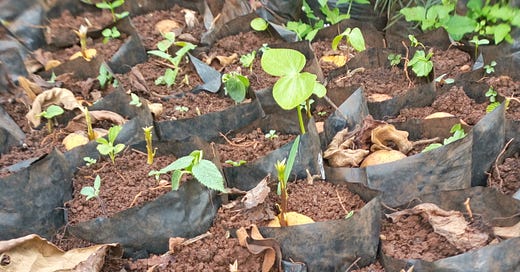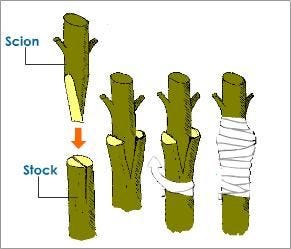A guide to planting and growing grafted Hass avocado in Kenya.
Seedlings to seedbed and everything in between.
Written by Collins Omanga.
The Hass avocado is an avocado variety that is known for its rough, dark green appearance. It was developed American farmer, Rudolph Hass and has become one of the most widely grown avocado varieties in the world; accounting for over 80% of avocado grown in California, USA and New Zealand. Over the past several years the Hass avocado variety has become increasingly popular in parts of Central Kenya and the Rift Valley due to its high demand in the export markets and its long shelf life compared to other varieties. In this newsletter we would like to share information about its propagation in the nursery to instructions on planting the seedlings once they are ready to be transplanted in the seedbed.
Propagation
Seeds from Hass avocado trees are not viable, you cannot grow Hass avocado from the fruits. To grow new Hass avocado seedlings you will need to graft a scion (upper part of grafted seedling) from a fruiting Hass plant onto an already germinated seedling from another viable avocado seedling (rootstock); you need to chose a healthy, vigorously growing seedling with a well developed root system as a rootstock. To grow a plant for use as a rootstock, choose an avoacado seed from a healthy indigenous fruit and place it in an almost full polythene planting bag, place the avocado seed with the wider part or where the fruit was attached to the branch facing downwards as the roots will develop from this side(as illustrated below).
Germinating avocado seedling, it will be used a rootstock when grafting.
For grafting you will need a clean blade and grafting tape. Cut the stem horizontally and split the stem into two halves, cut the scion into a V-shape and join the V-shaped scion into the rootstock. Tie the joined part with the grafting tape and ensure no water residue can enter the grafting wound. Always ensure you use clean cutting material and grafting tape to avoid contamination. After grafting you need to place the seedlings in a shaded area and water them regularly until the graft wound has healed perfectly. Always make sure you cut any branches that develop below the grafting point as they might kill the developing scion.
Transplanting the seedlings
Once the graft wound has healed and the grafting tape has been removed, the seedlings are now ready to be transferred to the seedbed. Dig a hole into the ground approximately thirty centimetres deep by thirty centimeters wide to ensure the roots get enough room. Place the seedling into the hole and cover it with manure mixed topsoil. Water the hole well and cover the root area with mulch. Seedlings are planted two and a half metres between rows and two metres in between the plants. For an acre of land, upto one hundred and forty seedlings can be planted.
Contact us or visit our nursery in Gitoro, Meru to order quality seeds and seedlings.




